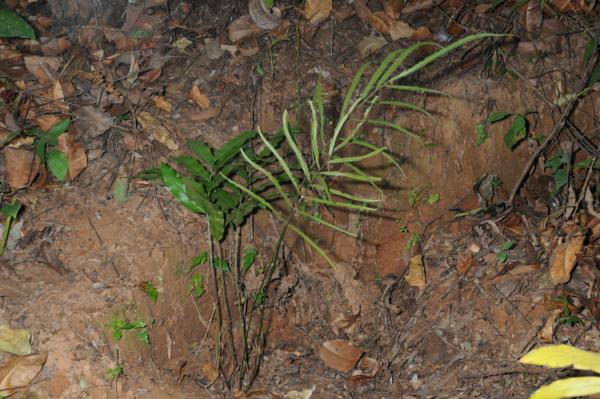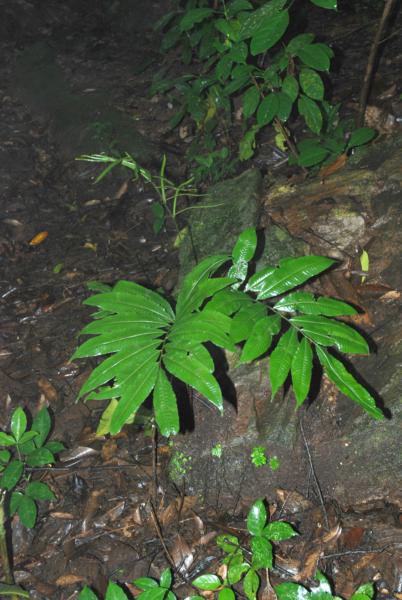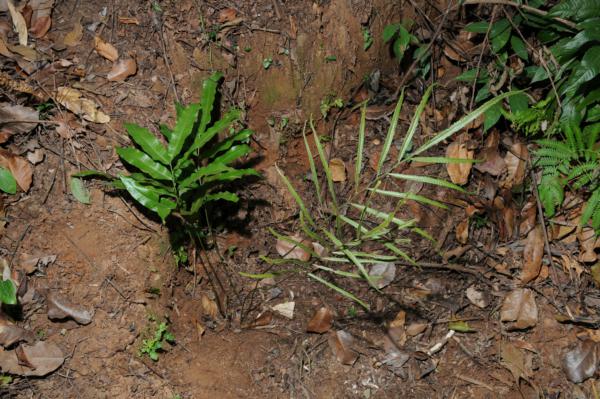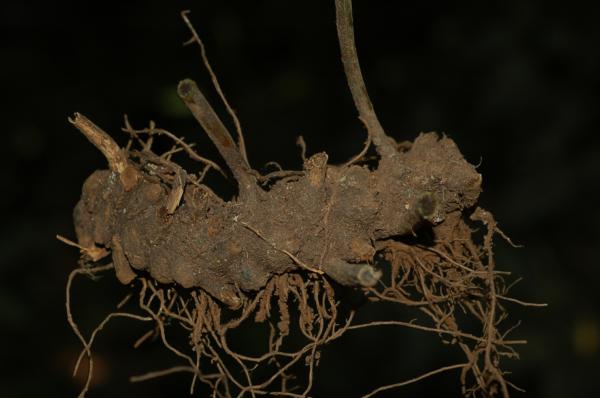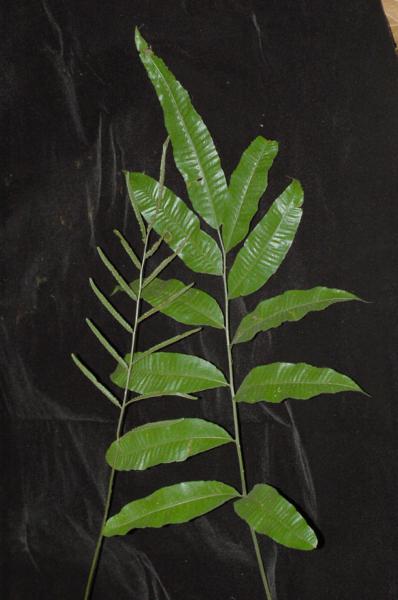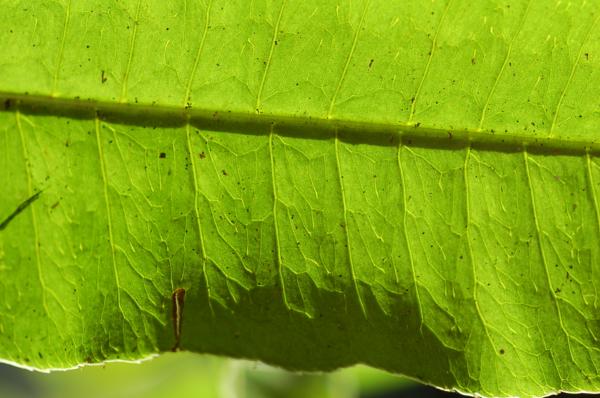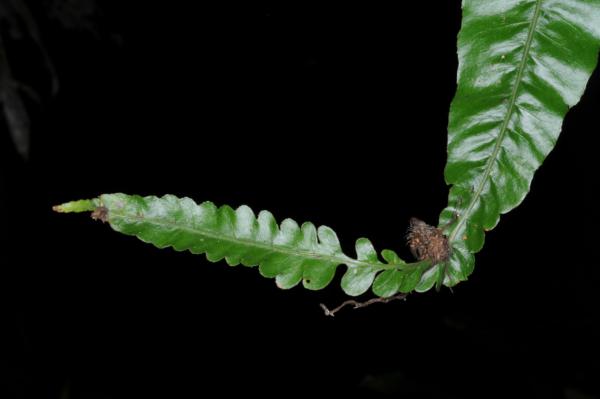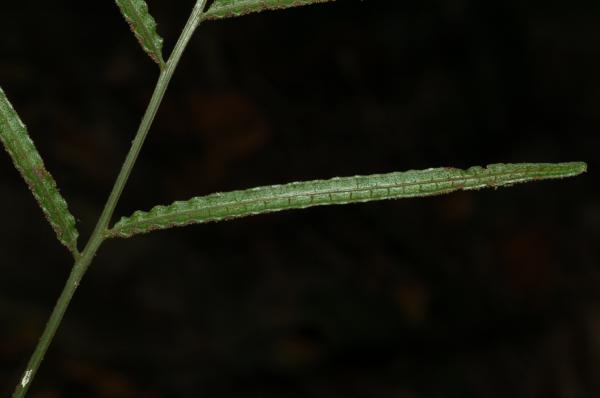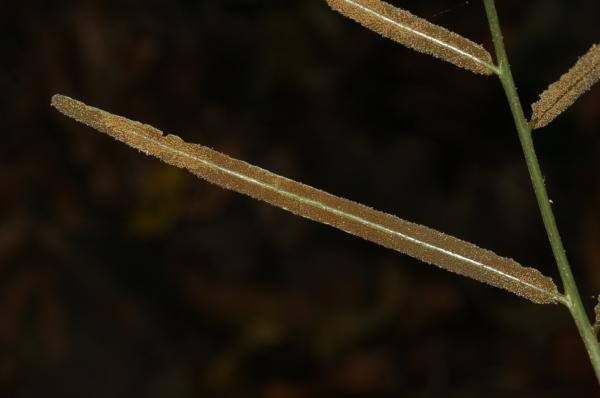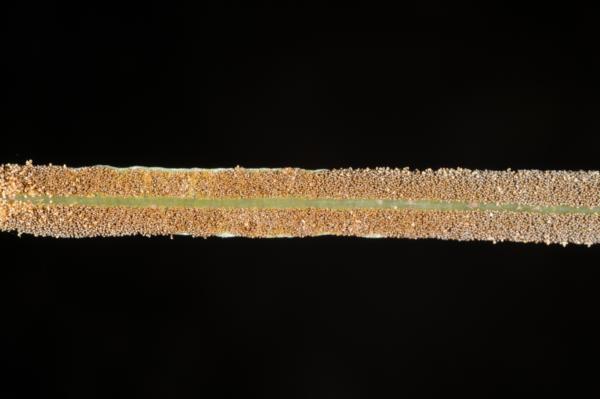
Bolbitis virens (Wall. ex Hook. & Grev.) Schott var. virens
Family
Dryopteridaceae
Nomenclature
Bolbitis virens (Wall. ex Hook. & Grev.) Schott, Gen. Fil.: ad t. 14. 1834; Holttum, Rev. Fl. Malaya ed. 1, 2: 468, f. 275. 1955 [‘1954’]; Tagawa & K. Iwats, SouthE. Asian Stud. 3(3): 85. 1965; Tagawa & K.Iwats., SouthE. Asian Stud. 5: 91. 1967; Hennipman, Blumea 18: 149. 1970; Hennipman, Leiden Bot. Ser. 2: 180, f. 47 & 48. 1977; Tagawa & K.Iwats., Fl. Thailand 3: 314. 1988; Boonkerd & Pollawatn, Pterid. Thailand: 185. 2000. – Acrostichum virens Wall. ex Hook. & Grev., Icon. Filic. II.: pl. 231. 1831. – Campium virens (Wall. ex Hook. & Grev.) C.Presl, Tent. Pterid.: 239. 1836; Copel., Philipp. J. Sci. 37: 388, f. 39. 1928.
Bolbitis costata auct. non (C.Presl) Ching: Holttum, Dansk Bot. Ark. 20: 30. 1961.
Bolbitis virens (Wall. ex Hook. & Grev.) Schott var. virens
Description
For the species :
Terrestrial or lithophytic. Rhizome short creeping, thick, densely scaly; scales thin but firm, dark brown, clathrate, up to 8 by 1.5 mm. Sterile frond: stipe 30–40 cm long, densely scaly throughout, scales on upper portion light brown, ferrugineous, appressed, irregular in shape; lamina oblong-ovate to oblong, 35–60 by about 30 cm; lateral pinnae 5–7 pairs, stalked, straight, ascending or patent in lower ones, oblong to oblong-lanceolate, caudate at apex, sometimes with bulbils on midrib near apex, narrowly cuneate or unequally rounded at base, up to 25 by 6 cm, toothed at margin, more or less waved; costa minutely scaly beneath, veins slightly raised on undersurface, reticulate with a few included veinlets in each areole; subcoriaceous, glabrous, green both in living and dried condition, terminal pinna like lateral ones or slightly larger, viviparous near apex. Fertile frond nearly as high as the sterile ones: stipe up to 55 cm long; lamina up to 40 by 20 cm; pinnae 4–6 pairs, linear, acuminate at apex, sometimes with bulbils on midrib near apex, stalked, up to 20 by 2 cm; sporangia dispersed on the whole undersurface of pinnae .
For the variety
Pinnae of fertile frond 8–12 by 0.2–0.7 cm, usually more than 15 times as long as wide.
Distribution in Thailand
NORTHERN: Chiang Mai, Lamphun, Phrae, Tak; NORTH-EASTERN: Loei; SOUTH-WESTERN: Kanchanaburi, Phetchaburi; SOUTH-EASTERN: Chanthaburi; PENINSULAR: Surat Thani.
Wider Distribution
Yunnan, Bangladesh (Chittagong), and Burma.
Ecology
On mountain slopes often near streams in dense mountain forests at 800–1200 m alt.
Proposed IUCN Conservation Assessment
Least Concern (LC). This variety is widespread and not under any known threats.
Voucher specimens - Thailand
Middleton et al. 4697, Chanthaburi, Khao Soi Dao Wildlife Sanctuary (E); Middleton et al. 4755, Kanchanaburi, Khao Laem National Park (E); Middleton et al. 4864, Chiang Mai, Doi Suthep-Doi Pui National Park (E).
Habit
Habit
Habit
Rhizome
Fertile and sterile fronds
Venation in sterile frond
Bulbil
Upper surface of fertile pinna
Lower surface of fertile pinna
Sori
Site hosted by the Royal Botanic Garden Edinburgh. Content managed by Stuart Lindsay, Gardens by the Bay, Singapore and David Middleton, Singapore Botanic Gardens. Last updated 24 January 2012
